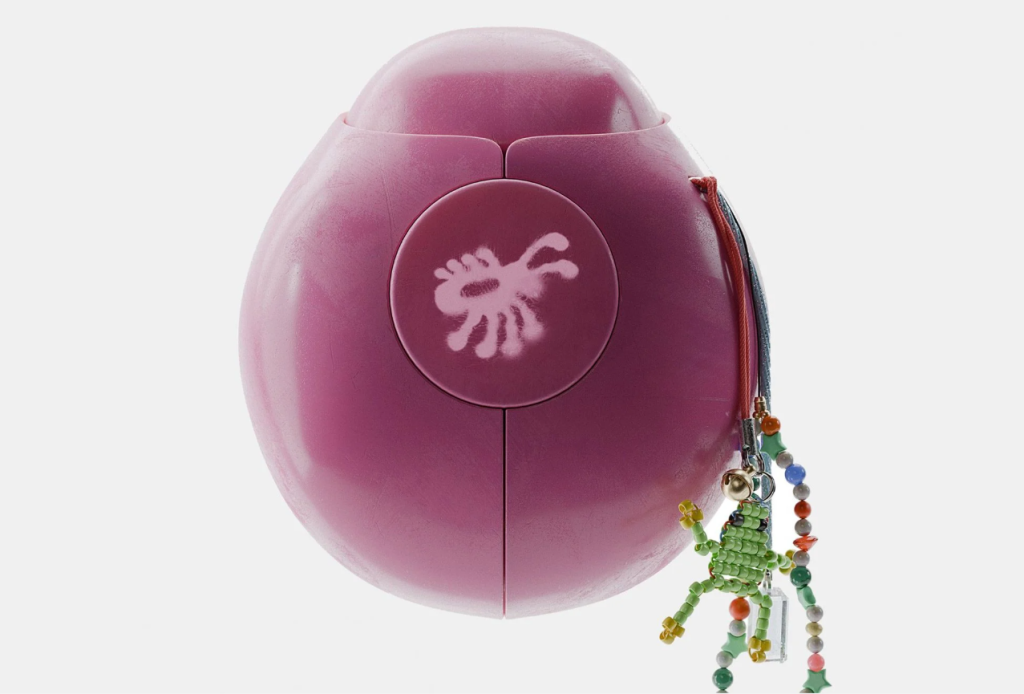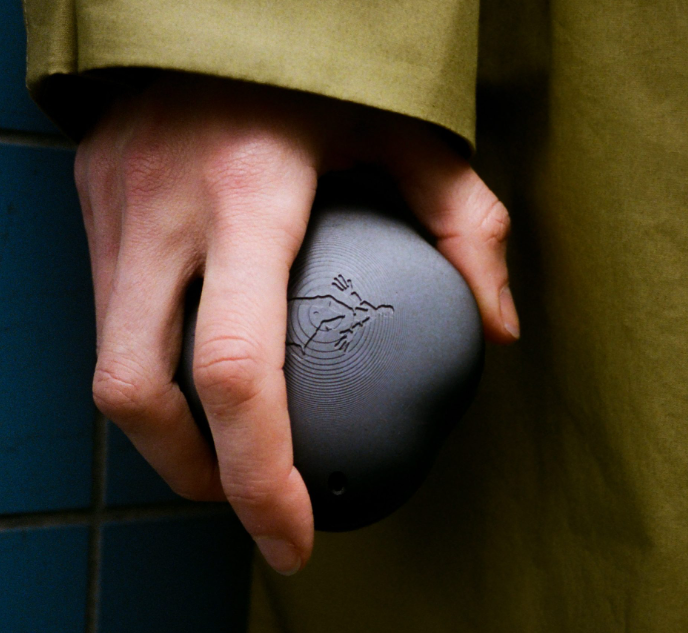Modem Works and Panter & Tourron have created Terra, a pocket-sized gadget that combines artificial intelligence (AI) with a rugged aesthetic to facilitate phone-free walks.
This innovative device serves as a compass-like companion, guiding users along bespoke routes crafted by AI in response to their preferences and prompts. Described as a “non-device” by Stefano Panterotto, Founder of Panter & Tourron, Terra aims to liberate walkers from the distractions of their phones, allowing them to immerse themselves fully in their surroundings. Its compact, rugged design, inspired by the aesthetics of outdoor gear and New Age culture, sets it apart from the sleek, polished look of mainstream tech products.
“This marks a departure from the familiar look and feel we’ve become accustomed to with companies like Apple,” Panterotto told Dezeen. “Our goal was a design that is both functional and meditative, similar to a fidget device – a product you can hold and play with for relaxation.”

Haptic guidance & AI-powered routes
Terra’s interface is minimalistic and unobtrusive, gently guiding users along their route through haptic feedback and a subtle arrow interface reminiscent of a compass needle. Animal and plant symbols further enhance the experience, guiding users along the right path in a manner reminiscent of fictional devices like those seen in the movie Jumanji.
Notably, Terra is its open-source nature, says the company. Designed to be manufacturable via 3D printing and powered by open-source software available on platforms like GitHub, Terra invites customization and exploration. Users can input text prompts to generate routes tailored to their preferences, thanks to a combination of Google’s Places application programming interfaces (APIs) and AI chatbot ChatGPT.
Terra’s routes are bespoke and created by AI in response to the user’s prompts. Examples from the Terra website include “Two-hour Marais stroll with patisserie visit” and “Kyoto architecture tour, back by 4 pm.” These personalized routes cater to individual preferences and interests, adding a unique touch to each walking experience.
Inspired by the ethos of DIY culture and the concept of self-design, the creators of Terra envision a future where the device is accessible to all, with opportunities for personalization and improvement. While Modem Works and Panter & Tourron may collaborate with brands to produce commercial versions of Terra, the original designs will always remain free and open-source.

How haptics aid the visually impaired
While Terra is used for phone-free walks, other products with haptic feedback were produced to aid visually impaired individuals navigate obstacles in their daily lives. For instance, 3D printing software provider Taktilesdesign showcased Tactile Color Compass during the purmundus challenge at Formnext Connect 2020, earning a special mention from the jury.
Celebrated as an annual event, the purmundus challenge, beckons designers and engineers globally to engage in a theme-centered 3D printing design competition. Collaborating with the expertise of Stratasys and Roland UV Printing, the compass employs a haptic experience to navigate visually impaired users through landscapes, images, and ordinary objects, associating tactile surfaces with colors.
Elsewhere, Technical University of Munich (TUM) researchers developed an infrared (IR) goggle-based setup to aid the visually impaired. The glasses, equipped with two IR cameras, transmit surrounding data to a motor-padded sleeve for haptic feedback, potentially replacing traditional canes.
Using Intel RealSense D415 cameras, the system translates images into vibrations, aiding obstacle detection. Though requiring user training, it achieved 98.6% accuracy in tests. Capable of sensing obstacles up to 3 meters away, it offers improved night perception and reduced course times by 53%.
What 3D printing trends do the industry leaders anticipate this year?
What does the Future of 3D printing hold for the next 10 years?
To stay up to date with the latest 3D printing news, don’t forget to subscribe to the 3D Printing Industry newsletter or follow us on Twitter, or like our page on Facebook.
While you’re here, why not subscribe to our Youtube channel? Featuring discussion, debriefs, video shorts, and webinar replays.
Are you looking for a job in the additive manufacturing industry? Visit 3D Printing Jobs for a selection of roles in the industry.
Featured image shows Terra promotes phone-free walks helping users reconnect with their surroundings. Photo via Modem Works.



